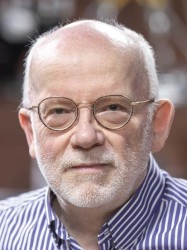BibTex format
@article{Rose:2018:10.1063/1.5018735,
author = {Rose, SJ and Santos, JJ and Bailly-Grandvaux, M and Ehret, M and Arefiev, AF and Batani, D and Beg, FN and Calisti, A and Ferri, S and Florido, R and Forestier-Colleoni, P and Fujioka, S and Gigasos, MA and Giu, rida L and Gremillet, L and Honrubia, JJ and Kojima, S and Korneev, P and Law, KFF and Marques, J-R and Morace, A and Mosse, C and Peyrusse, O and Roth, M and Sakata, S and Schaumann, G and Suzuki-Vidal, F and Tikhonchuk, V and Toncian, T and Woolsey, N and Zhang, Z},
doi = {10.1063/1.5018735},
journal = {Physics of Plasmas},
title = {Laser-driven strong magnetostatic fields with applications to charged beam transport and magnetized high energy-density physics},
url = {http://dx.doi.org/10.1063/1.5018735},
volume = {25},
year = {2018}
}

